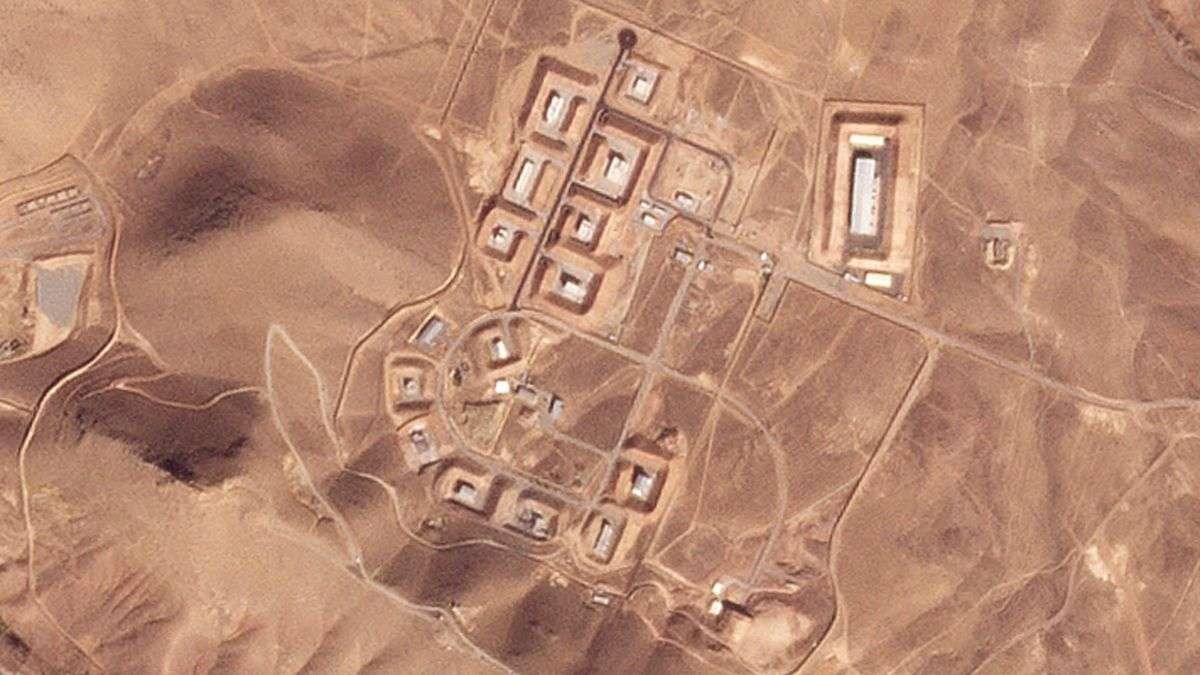
International: An Israeli attack on Iran damaged facilities at a secretive military base southeast of the Iranian capital that experts in the past have linked to Tehran's onetime nuclear weapons programme and at another base tied to its ballistic missile programme, satellite photos analysed Sunday by The Associated Press show. Some of the buildings damaged sat in Iran's Parchin military base, where the International Atomic Energy Agency suspects Iran in the past conducted tests of high explosives that could trigger a nuclear weapon. Iran long has insisted its nuclear programme is peaceful, though the IAEA, Western intelligence agencies and others say Tehran had an active weapons programme up until 2003.
The other damage could be seen at the nearby Khojir military base, which analysts believe hides an underground tunnel system and missile production sites. Iran's military has not acknowledged damage at either Khojir or Parchin from Israel's attack early Saturday, though it has said the assault killed four Iranian soldiers working in the country's air defence systems.
Iran's mission to the United Nations did not immediately respond to a request for comment, nor did the Israeli military.
Israeli attack "should not be exaggerated nor downplayed": Iran Supreme Leader
However, Iranian Supreme Leader Ayatollah Ali Khamenei on Sunday told an audience that the Israeli attack “should not be exaggerated nor downplayed,” while stopping short of calling for an immediate retaliatory strike. Israeli Prime Minister Benjamin Netanyahu separately said Sunday that Israel's strikes “severely harmed” Iran and that the barrage “achieved all its goals." It remains unclear how many sites in total were targeted in the Israeli attack. There have been no images of damage so far released by Iran's military.
Iranian officials have identified affected areas as being in Ilam, Khuzestan and Tehran provinces. Burned fields could be seen in satellite images from Planet Labs PBC around Iran's Tange Bijar natural gas production site in Ilam province on Saturday, though it wasn't immediately clear if it was related to the attack. Ilam province sits on the Iran-Iraq border in western Iran. The most telling damage could be seen in Planet Labs images of Parchin, some 40 kilometres southeast of downtown Tehran near the Mamalu Dam. There, one structure appeared to be totally destroyed while others looked damaged in the attack.
At Khojir, some 20 kilometres away from downtown Tehran, damage could be seen on at least two structures in satellite images.
Analysts including Decker Eveleth at the Virginia-based think tank CNA, Joe Truzman at the Washington-based Foundation for Defence of Democracies and former United Nations weapon inspector David Albright, as well as other open-source experts, first identified the damage to the bases. The locations of the two bases correspond to videos obtained by the AP showing Iranian air defence systems firing in the vicinity early on Saturday.
At Parchin, Albright's Institute for Science and International Security identified the destroyed building against a mountainside as “Taleghan 2.” It said an archive of Iranian nuclear data earlier seized by Israel identified the building as housing “a smaller, elongated high explosive chamber and a flash X-ray system to examine small-scale high explosive tests.” “Such tests may have included high explosives compressing a core of natural uranium, simulating the initiation of a nuclear explosive,” a 2018 report by the institute says.
In a message posted to the social platform X early Sunday, the institute added: “It is not certain whether Iran used uranium at Taleghan 2,' but it is possible it studied the compression of natural uranium hemispheres, which would explain its hasty and secretive renovation efforts following the IAEA's request to access Parchin in 2011.”
It's unclear what, if any, equipment would have been inside of the “Taleghan 2" building early Saturday. There were no Israeli strikes on Iran's oil industry, its nuclear enrichment sites or its nuclear power plant at Bushehr during the assault.
Rafael Mariano Grossi, who leads the IAEA, confirmed that on X, saying “Iran's nuclear facilities have not been impacted.” “Inspectors are safe and continue their vital work,” he added. “I call for prudence and restraint from actions that could jeopardise the safety & security of nuclear & other radioactive materials.”
Other buildings destroyed at Khojir and Parchin likely included a warehouse and other buildings where Iran used industrial mixers to create the solid fuel needed for its extensive ballistic missile arsenal, Eveleth said.
In a statement issued immediately after the attack Saturday, the Israeli military said it targeted “missile manufacturing facilities used to produce the missiles that Iran fired at the state of Israel over the last year.”
Destroying such sites could greatly disrupt Iran's ability to manufacture new ballistic missiles to replenish its arsenal after the two attacks on Israel. Iran's paramilitary Revolutionary Guard, which oversees the country's ballistic missile programme, has been silent since Saturday's attack.
Iran's overall ballistic missile arsenal, which includes shorter-range missiles unable to reach Israel, was estimated to be “over 3,000” by Gen. Kenneth McKenzie, then-commander of the US military's Central Command, in testimony to the US Senate in 2022. In the time since, Iran has fired hundreds of the missiles in a series of attacks. There have been no videos or photos posted to social media of missile parts or damage in civilian neighbourhoods following the recent attack — suggesting that the Israeli strikes were far more accurate than Iran's ballistic missile barrages targeting Israel in April and October. Israel relied on aircraft-fired missiles during its attack.
However, one factory appeared to have been hit in Shamsabad Industrial City, just south of Tehran near Imam Khomeini International Airport, the country's main gateway to the outside world. Online videos of the damaged building corresponded to an address for a firm known as TIECO, which advertises itself as building advanced machinery used in Iran's oil and gas industry. Officials at TIECO requested the AP write the company a letter before responding to questions. The firm did not immediately reply to a letter sent to it.
--Advertisement--

 Desk
Desk Share
Share






